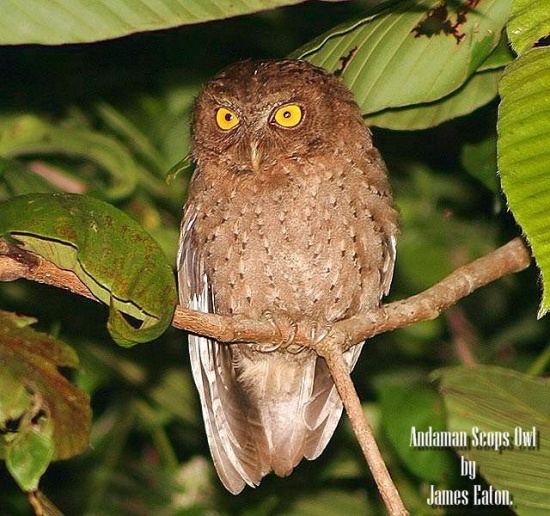- Otus balli
Identification
18–19 cm
- Noticeable ear tufts
- Pale eyebrows
There are two morphs, rufous and grey-brown
Distribution
Taxonomy
This is a monotypic species[1].
Habitat
Semi-open or cultivated areas and around human settlements.
Behaviour
Nocturnal.
Diet
The diet mostly consists of caterpillars but also includes insects and beetles.
Breeding
It nests in February-April.
References
- Clements, J. F., T. S. Schulenberg, M. J. Iliff, D. Roberson, T. A. Fredericks, B. L. Sullivan, and C. L. Wood. 2014. The eBird/Clements checklist of birds of the world: Version 6.9., with updates to August 2014. Downloaded from http://www.birds.cornell.edu/clementschecklist/download/
- BirdLife International
- Handbook of the Birds of the World Alive (retrieved November 2014)
Recommended Citation
- BirdForum Opus contributors. (2024) Andaman Scops Owl. In: BirdForum, the forum for wild birds and birding. Retrieved 20 April 2024 from https://www.birdforum.net/opus/Andaman_Scops_Owl
External Links
GSearch checked for 2020 platform.




